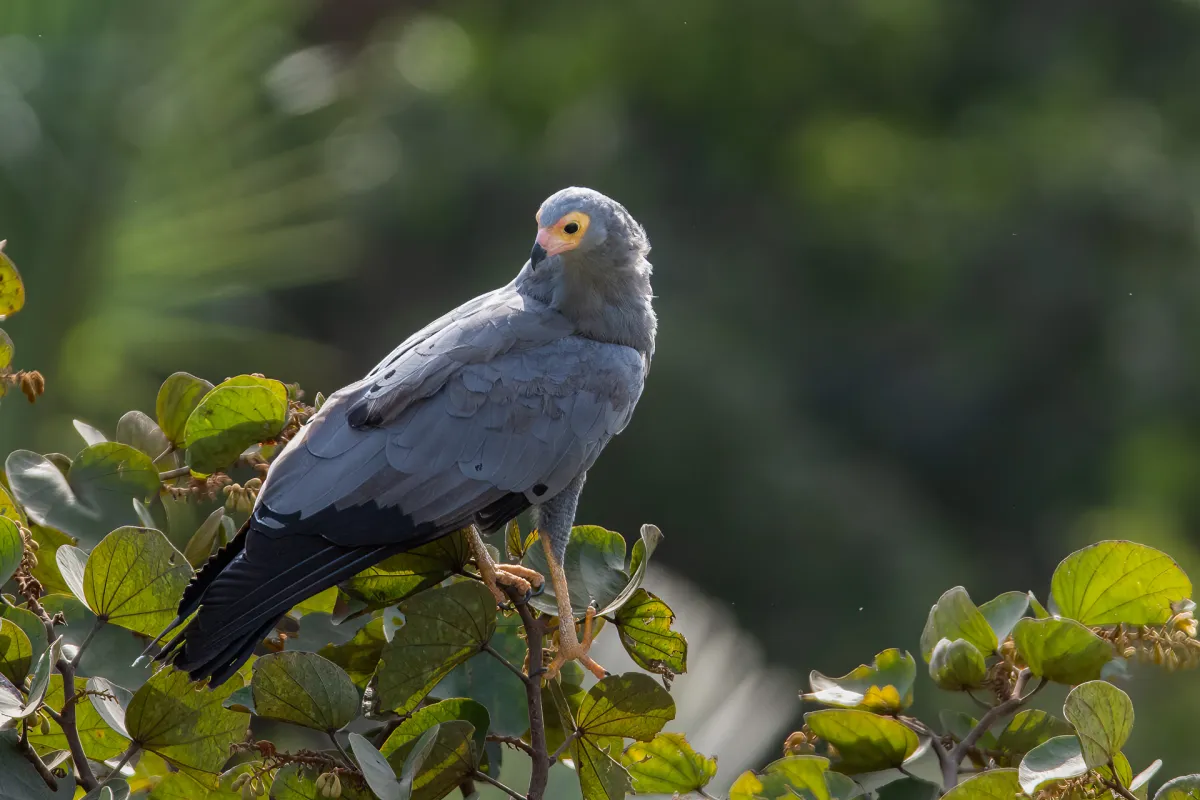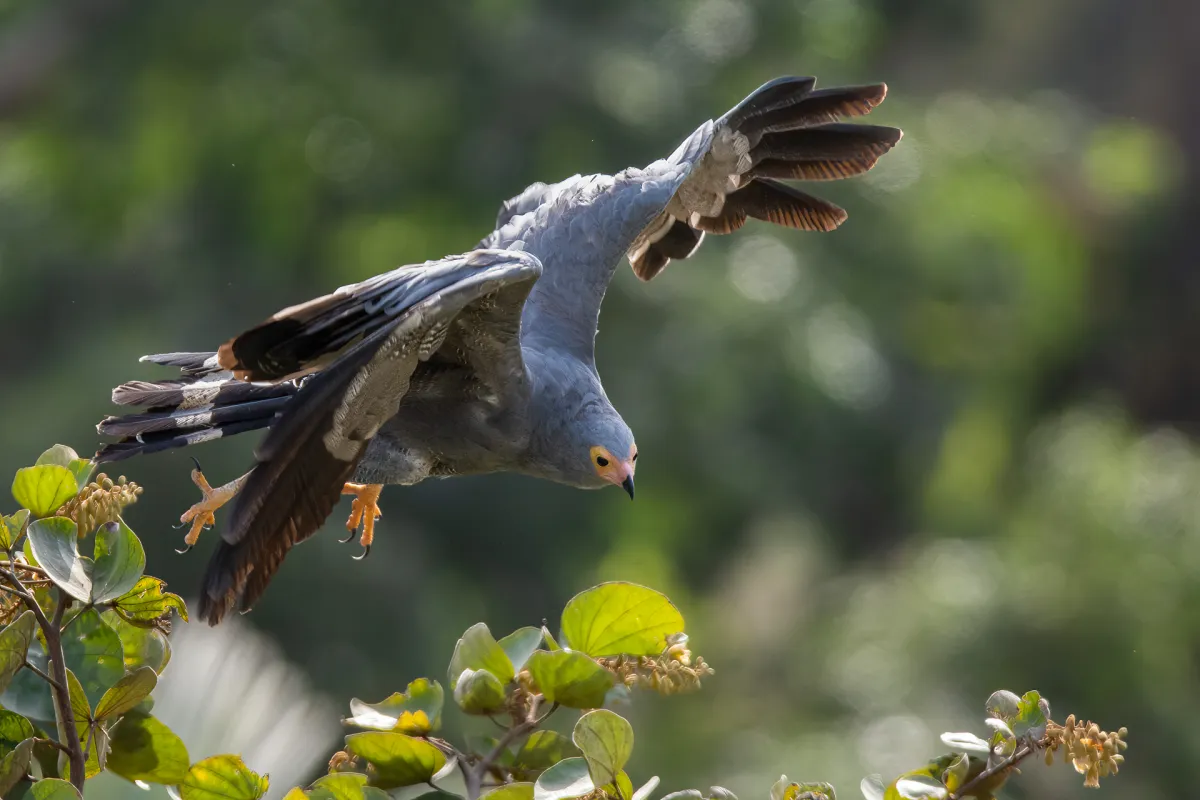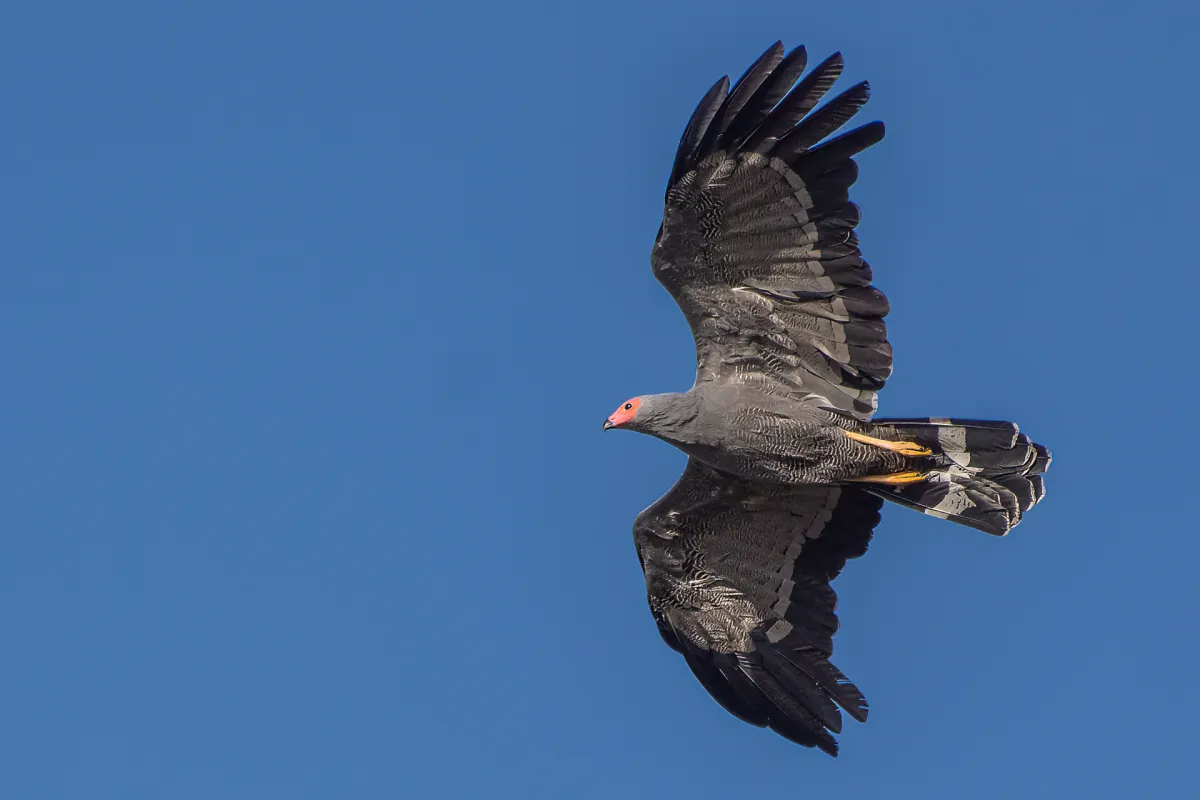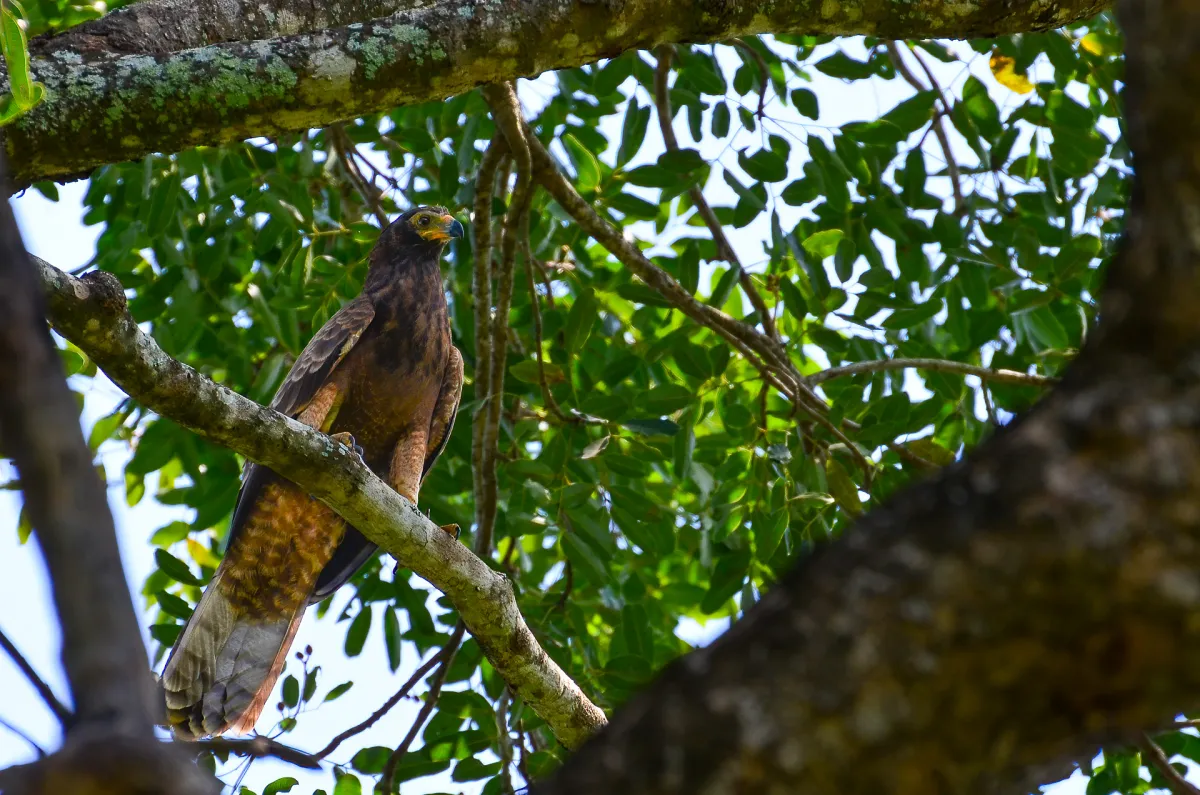The African Harrier Hawk, Polyboroides typus, also known as the Gymnogene, is a medium-sized bird of prey found throughout sub-Saharan Africa.
Appearance and Characteristics
The African Harrier Hawk is a medium-sized bird, measuring about 55cm in length and weighing around 500g. It has a distinctive, curved bill that is perfect for reaching into small crevices to extract prey. Its body is predominantly grey, with a white belly and a distinctive black and white striped tail. The wings are broad and rounded, giving the bird excellent maneuverability in flight.

One of the most interesting features of the African Harrier Hawk is its legs, which are covered in rough scales that allow the bird to climb trees with ease. In addition, it has double-jointed knees which enable it to reach into otherwise inaccessible holes and cracks for prey. This adaptation is particularly useful, as the hawk is known to raid nests and steal eggs and chicks from tree-dwelling birds.
Hunting and Diet
The African Harrier Hawk is an opportunistic hunter, feeding on a wide range of prey including small mammals, reptiles, insects, and birds. Its unique bill allows it to extract prey from tight spaces, such as crevices in tree bark or small holes in termite mounds.

Those talons!!
One of the most impressive hunting strategies of the African Harrier Hawk is its ability to raid the nests of other birds. It will climb trees using its rough-scaled legs and use its bill to extract eggs and chicks from the nest. It is also known to hunt in pairs, with one bird flushing prey out of hiding while the other waits to catch it in mid-air.
Conservation Status
The African Harrier Hawk is classified as a species of least concern by the International Union for Conservation of Nature (IUCN). While there are no major threats to the species as a whole, habitat loss and degradation due to human activities are a concern in some areas. Additionally, the bird’s dependence on tree-dwelling prey means that it may be impacted by the loss of mature trees and forests.

Juvenile Harrier Hawk skulking in the trees…
